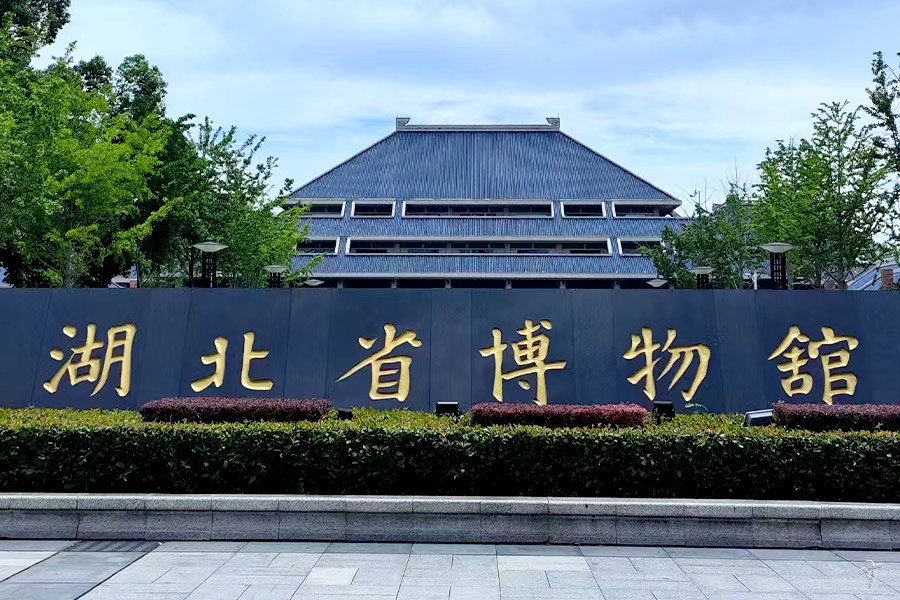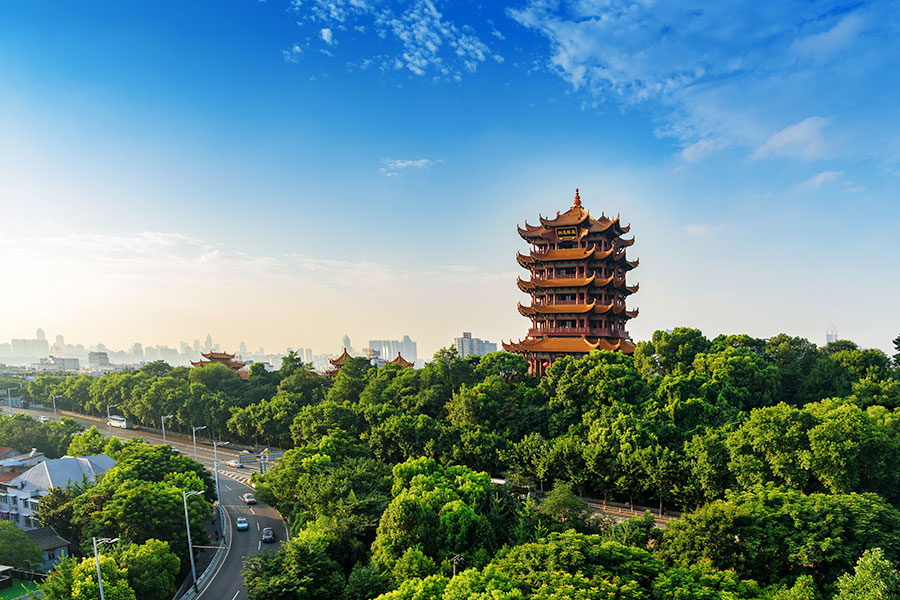Hubei Provincial Museum

Chinese name: 湖北省博物馆 (Hubei Sheng Bowuguan).
Location: No. 156, East Lake Road, Wuchang District, Wuhan city, Hubei province.
Opening time: 09:00-17:00 (No admission after 15:30); The museum is closed on Mondays except on the public holidays.
Entrance fee:
-Free (500 people are allowed to enter for every half an hour and 5000 tickets are offered per day);
-Chime Bells Performance: CNY15 (for 20 minutes).
How to get there:
-Take buses No.14, 108, 402, 411, 552, 578, 701, 709 and get off at the station of Hubei Provincial Museum;
-Take buses No.605, 709, 712 and get off at Huangli Road Station (opposite the Hubei Daily).
Best time for visit: spring and autumn.
Travel tips:
1. Do not chase and make noise when you are in the exhibition halls. Please turn off your cell phone.
2. Please keep clean. Water and food are forbidden to take into the exhibition halls and smoking is not allowed.
3. Some parts of the exhibition hall are allowed to take photos, but the flashgun and tripod are forbidden. What you have shot is not allowed to use for any commercial and publishing purposes.
Introduction to Hubei Provincial Museum
Built in 1953, Hubei Provincial Museum was one of the eight national museums established by both central and local governments. Now Hubei Provincial Museum is the only comprehensive museum in Hubei province. The museum has collected over 200,000 cultural relics, including pottery, porcelain, jades, bronze wares, lacquer wares, ancient weapons, ancient musical instruments, ancient coins, ancient calligraphy and paintings, etc. Among these cultural relics, 812 are listed as first-class relics of China, and 16 are considered as national treasures. In the museum, there is also the largest exhibition hall of the ancient musical instruments in China.
The overall layout of Hubei Provincial Museum reflects the construction model and characteristics of Chu State (a state in the Spring and Autumn Period (770BC-476BC)). The outdoor environment creates a kind of historical and cultural atmosphere in accord with the main buildings of the museum, offering a quiet and comfortable travel to the tourists.
There are also antique stores in the museum. After you visit the two exhibition halls, you can buy some souvenirs if you like.
The Exhibition Halls
The museum consists of three parts: the comprehensive exhibition hall, the Chu Culture Exhibition Hall and the Chime Bell Exhibition Hall.
1. There are two parts in the Chime Bells Exhibition Hall: the Exhibition Hall and the Music Hall. In the Exhibition Hall, you can see the Chime Bells from the tomb of Yi, which is one of the four greatest treasures in the Hubei Provincial Museum. In the Music Hall, you can enjoy the beautiful music from the replica of the Chime Bells played by musicians who wear ancient clothes. The performance, which has been played overseas on many occasions, is played two times a day, at 11:00 and 16:00.
2. The Chu Culture Exhibition Hall features the regional culture of the Chu State. Most of the cultural relics displayed here are bronze vessels, lacquer works, bamboo and wooden artifacts, and silk knitted products. In 2002, archaeologists discovered pieces of chariots and horses of the Chu State. After careful restoration, some of the chariots and horses are now displayed in this hall. In addition to the unearthed cultural relics, some restored models of the houses in which Chu people lived are shown to the visitors to give them more direct impression of the ancient Chu people's lives.
3. The Comprehensive Exhibition is still under construction at the present time.
The Four Greatest Treasures of Hubei Provincial Museum
1. The bronze sword of Goujian (the king of Yue State in the Spring and Autumn Period).
This bronze sword was made in the late Spring and Autumn Period. It is about 55.7 centimeters long and is formed by many little dark cells. The sword has kept stainless for thousands of years and the blade is still thin but sharp. It is said that this sword can scratch down twenty-one pieces of paper for one cut.
2. No. 1 human skull fossil of Yun County (a county in Hubei province).
The skull was found in 1989, it is about 16 centimeters long, 19centimeters wide and 12 centimeters high. It was measured to be the skull of human in the Paleolithic period, which is determined as the upright walking human about 1 million years ago. This skull fossil is the most intact ancient human skull fossil which is firstly found in Hubei province.
3. The Chime Bells from the tomb of Yi (the king of the Zeng State in the Warring States Period (476BC-221BC))
The whole set of this Chime Bells contains sixty-five bells with different sizes, so it can play various tones of the musical scale. This set of Chime Bells is the largest bronze musical instrument ever discovered. There are about 3,000 ancient Chinese characters on the bells, describing the music and the owner of this instrument.
4. Blue-and-white vase of four-favors figures of Yuan Dynasty (1206-1368)
On the vase, there are four traditional Chinese paintings, i.e. Wang Xizhi’s favor orchid, Tao Yuanming’s favor chrysanthemum, Zhou Dunyi’s favor lotus and Lin Hejing’s favors plum blossom and crane (all these four persons were famous Poets in Chinese history). This vase was found in the tomb of Zhu Yuanzhang’s son (Zhu was the first emperor of Ming Dynasty) and it is a rare element because of its bright colors.
Permanent Exhibitions
In addition to the four greatest treasures in the museum, there are also some other permanent exhibitions.
1. The History of Writing: exhibits the writing bamboo slips and writing tools in Qin (221BC-206BC) and Han Dynasties (202BC-220AD), giving the visitors a direct visual experience of "ancient books" of Chinese ancestors.
2. The Art of Earth and Fire: aims to introduce the development of porcelain in Hubei Province, most of these cultural relics are firstly presented to the public.
3. The Art of Lacquer in Qin and Han Dynasties: the lacquer is one of the greatest inventions in ancient China, which reached its peak in Qin and Han Dynasties. This exhibition presents the most antique collection of lacquer wares in the museum.
Quick Questions
Our team is waiting for your questions. Please feel free to ask us any questions you might have about our China package tours, Chinese culture, or the sites available. We will gladly help you with any special needs you might have and all questions, like our trip designing is completely free of charge.





